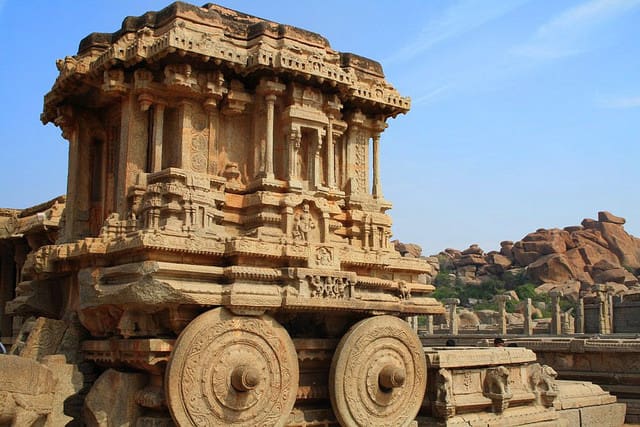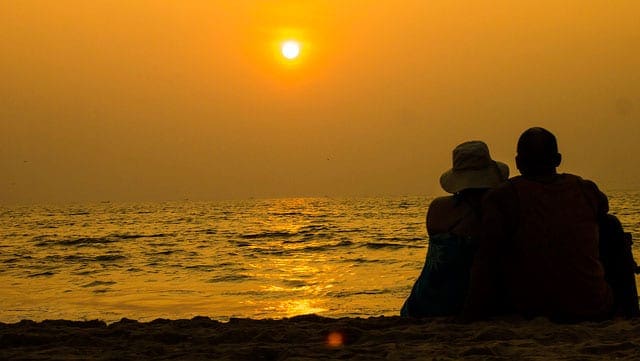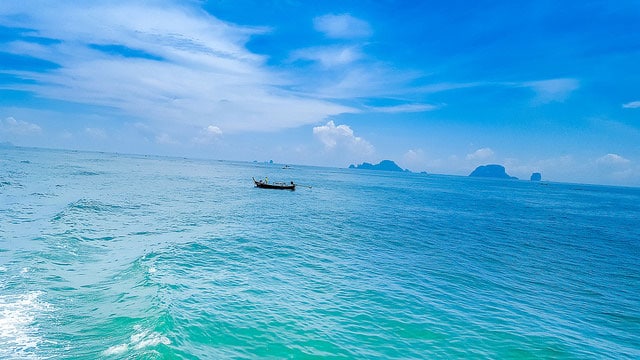India, with its extensive coastline embracing the Arabian Sea, the Bay of Bengal, and the Indian Ocean, offers a diverse range of scuba diving experiences that cater to both novice and experienced divers alike. Let’s delve deeper into the top 5 scuba diving destinations across the Indian subcontinent, each offering its own unique charm and underwater wonders.
1. Andaman and Nicobar Islands: A Marine Paradise
Tucked away in the azure waters of the Bay of Bengal, the Andaman and Nicobar Islands boast some of the most pristine and biodiverse marine ecosystems in the world. The archipelago is home to over 570 islands, many of which remain uninhabited, making it a haven for marine life. Scuba diving enthusiasts flock to sites like Havelock Island, Neil Island, and North Bay Island to explore the vibrant coral reefs, underwater caves, and an array of marine species.
Dive into the crystal-clear waters surrounding these islands, and you’ll be greeted by a kaleidoscope of colors, from intricate coral formations to schools of tropical fish darting through the currents. Keep your eyes peeled for encounters with majestic manta rays, playful dolphins, and the elusive dugong, often spotted grazing on seagrass beds.
2. Lakshadweep Islands: Jewels of the Arabian Sea
Situated off the southwestern coast of India, the Lakshadweep Islands form a mesmerizing archipelago of 36 coral atolls and pristine beaches. Blessed with clear waters and abundant marine life, these islands offer a serene escape for scuba diving enthusiasts seeking solitude and adventure beneath the waves. Explore dive sites like Agatti Island, Kadmat Island, and Bangaram Island, where you’ll encounter vibrant coral gardens, curious reef sharks, and graceful sea turtles gliding effortlessly through the water.
3. Goa: Beyond Beach Parties
While Goa is renowned for its vibrant nightlife and sun-kissed beaches, it also holds hidden treasures beneath the surface of the Arabian Sea. Scuba diving in Goa offers a unique blend of underwater landscapes, from rocky outcrops to sandy seabeds teeming with life. Dive sites such as Grande Island and Bat Island beckon divers with their diverse marine ecosystems, including colorful corals, schooling fish, and intriguing shipwrecks waiting to be explored.
As you descend into the depths, you’ll be immersed in a world of marine biodiversity, where every dive unveils new discoveries and unexpected encounters. Whether you’re a beginner or an experienced diver, Goa’s underwater realm promises excitement and adventure for all who dare to explore its depths.
4. Pondicherry: Where East Meets West
Nestled on the southeastern coast of India, Pondicherry is a charming blend of French colonial architecture and Indian culture, offering a unique backdrop for scuba diving adventures. Dive into the azure waters of the Bay of Bengal and discover a world of underwater wonders, from colorful reef formations to ancient shipwrecks steeped in history.
Explore dive sites like Temple Reef, The Hole, and Aravind’s Wall, where you’ll encounter a diverse array of marine life, including lionfish, moray eels, and vibrant nudibranchs. Whether you’re exploring shallow reefs or deep underwater canyons, Pondicherry promises thrilling encounters and unforgettable memories beneath the waves.
5. Netrani Island, Karnataka: The Hidden Gem
Located off the coast of Karnataka, Netrani Island is a hidden gem for scuba diving enthusiasts seeking adventure in the Arabian Sea. This small, uninhabited island boasts crystal-clear waters and pristine coral reefs, making it a paradise for underwater exploration. Dive sites like Grand Central Station and The Abyss offer exhilarating encounters with large pelagic species, including reef sharks, barracudas, and even the occasional whale shark.
As you descend into the depths of Netrani’s underwater realm, you’ll be surrounded by a kaleidoscope of colors and marine life, from bustling reef fish to elusive octopuses hiding in crevices. Whether you’re exploring underwater pinnacles or drifting along vibrant coral walls, Netrani Island promises an unforgettable scuba diving experience for adventurers of all levels.
From the remote islands of the Andaman Sea to the bustling shores of Goa, India’s scuba diving destinations offer a wealth of opportunities to explore the wonders of the underwater world. Whether you’re seeking vibrant coral reefs, thrilling encounters with marine life, or the allure of underwater wrecks, India’s diverse coastlines promise an adventure of a lifetime beneath the waves.
Climatic Conditions and Best Time to Visit
Understanding the climatic conditions of each scuba diving destination is crucial for planning your underwater adventure. In general, the best time to visit most diving destinations in India is during the dry season, which typically falls between October and May. During these months, the weather is pleasant, and the sea conditions are ideal for diving, with good visibility and calm waters.
However, it’s essential to research the specific weather patterns of each region, as they can vary depending on their geographical location. For instance, the Andaman and Nicobar Islands experience a tropical climate, with temperatures ranging from 23°C to 31°C throughout the year. The dry season, from November to April, is the best time for diving, with excellent visibility and calm seas.
Similarly, the Lakshadweep Islands enjoy a tropical maritime climate, characterized by warm temperatures and moderate rainfall. The dry season, from October to May, offers the best conditions for diving, with clear waters and minimal rainfall.
In contrast, Goa experiences a subtropical climate, with hot and humid summers and mild winters. The best time to dive in Goa is during the dry season, from November to March, when the weather is pleasant, and the sea is calm.
Pondicherry, with its coastal location, enjoys a tropical climate, with temperatures ranging from 24°C to 35°C throughout the year. The dry season, from October to March, is ideal for diving, with comfortable temperatures and good visibility.
Netrani Island, being situated off the coast of Karnataka, experiences a tropical climate similar to that of Goa and Pondicherry. The best time to dive at Netrani Island is during the dry season, from October to March, when the weather is pleasant, and the sea conditions are favorable.
How to Reach
Getting to these scuba diving destinations in India is relatively easy, with well-connected airports, railway stations, and road networks. Here’s a brief overview of how to reach each destination:
- Andaman and Nicobar Islands: The main entry point to the Andaman Islands is Port Blair, which is well-connected to major cities in India by air. Regular flights operate from cities like Chennai, Kolkata, and Delhi to Veer Savarkar International Airport in Port Blair. From Port Blair, ferries and boats are available to reach different islands within the archipelago.
- Lakshadweep Islands: Agatti Island serves as the gateway to the Lakshadweep Islands, with regular flights operating from Kochi in Kerala. Once you reach Agatti, you can take inter-island ferries or boats to reach other islands in the archipelago.
- Goa: Dabolim Airport in Goa is well-connected to major cities in India, with regular domestic and international flights. Additionally, Goa is well-connected by rail and road networks, making it easily accessible from neighboring states.
- Pondicherry: The nearest airport to Pondicherry is Chennai International Airport, located approximately 150 kilometers away. From Chennai, you can either take a taxi or bus to reach Pondicherry. Alternatively, you can travel by train to Villupuram Junction, which is the nearest railway station to Pondicherry.
- Netrani Island, Karnataka: The nearest airport to Netrani Island is Mangalore International Airport, located approximately 170 kilometers away. From Mangalore, you can hire a taxi or take a bus to reach the coastal town of Murudeshwar. From Murudeshwar, boats are available to take you to Netrani Island.
History and Cultural Significance
Each scuba diving destination in India is steeped in rich history and cultural significance, adding to the allure of the underwater experience. For instance, the Andaman and Nicobar Islands hold a significant place in India’s history, serving as a colonial outpost during the British Raj and later as a penal colony for political prisoners.
Similarly, Goa bears witness to a vibrant mix of Portuguese and Indian cultures, evident in its architecture, cuisine, and religious festivals. Pondicherry, on the other hand, showcases its French colonial heritage through its well-preserved colonial buildings and quaint streets.
Food and Local Cuisine
No scuba diving adventure in India is complete without indulging in the local cuisine, which reflects the diverse flavors and culinary traditions of each region. Whether you’re savoring fresh seafood dishes in Goa, feasting on South Indian delicacies in Pondicherry, or enjoying traditional Malabar cuisine in the Lakshadweep Islands, the culinary experiences in these destinations are sure to tantalize your taste buds.
Accessibility and Accommodation
Most scuba diving destinations in India offer a range of accommodation options to suit every budget and preference, from luxury resorts to budget guesthouses and beachside cottages. Whether you’re looking for a secluded beach retreat in the Andaman Islands or a vibrant beachfront hotel in Goa, you’ll find plenty of options to choose from.
Nearby Hotels and Restaurants
For travelers seeking convenience and comfort, many scuba diving operators in India offer packages that include accommodation, meals, and diving excursions. Additionally, there are plenty of hotels, resorts, and restaurants near popular diving sites, ensuring that you have everything you need for a memorable and hassle-free diving experience.
Travel Tips
Before embarking on your scuba diving adventure in India, here are some essential travel tips to keep in mind:
- Make sure to book diving excursions with certified diving operators who adhere to safety guidelines and environmental conservation practices.
- Check the weather and sea conditions before planning your diving trip, and be prepared for any changes in weather.
- Bring along essential diving gear, such as masks, fins, and wetsuits, or rent them from diving operators.
- Respect the marine environment and avoid touching or disturbing coral reefs and marine life during your diving excursions.
Conclusion
India’s scuba diving destinations offer a diverse range of underwater experiences, from vibrant coral reefs to intriguing shipwrecks and encounters with marine life. Whether you’re a novice diver or an experienced underwater explorer, these destinations promise unforgettable adventures beneath the waves.
Frequently Asked Questions (FAQs)
Q: Is scuba diving safe for beginners?
A: Yes, scuba diving can be safe for beginners when conducted under the supervision of certified diving instructors and operators. Before diving, beginners are usually provided with thorough diving instructions and safety briefings to ensure a safe and enjoyable experience underwater.
Q: Do I need to have prior diving experience to dive in India?
A: No, you don’t necessarily need prior diving experience to dive in India. Many diving operators offer introductory diving courses and beginner-friendly diving excursions for those who are new to scuba diving. These courses typically include basic diving techniques, safety procedures, and supervised diving sessions to help beginners feel comfortable underwater.
Q: What is the minimum age requirement for scuba diving?
A: The minimum age requirement for scuba diving varies depending on the diving operator and the certification agency. In general, most diving operators require participants to be at least 10 to 12 years old to participate in introductory diving courses and supervised diving excursions. However, certain diving programs may have higher age requirements, so it’s essential to check with the diving operator beforehand.
Q: Can non-swimmers go scuba diving?
A: While it’s not mandatory to be a proficient swimmer to go scuba diving, it’s recommended to have basic swimming skills and water confidence before attempting scuba diving. Many diving operators require participants to demonstrate basic swimming abilities, such as treading water and floating, before allowing them to participate in diving activities. Additionally, some diving programs offer special introductory courses for non-swimmers, focusing on building water confidence and diving skills in shallow water environments.
Q: What should I bring for a scuba diving trip?
A: For a scuba diving trip, it’s essential to pack essential diving gear, such as a mask, snorkel, fins, and a wetsuit. If you have your own diving equipment, make sure to bring it along. If not, most diving operators provide rental equipment for participants. Other items to consider bringing include sunscreen, a towel, a change of clothes, and any necessary medications. It’s also a good idea to bring a reusable water bottle and snacks to stay hydrated and energized during your diving excursions.
Q: Are there any age restrictions for diving excursions?
A: While there may not be strict age restrictions for diving excursions, diving operators typically require participants to be in good physical health and have a reasonable level of fitness to participate safely. Children and elderly individuals may be subject to additional assessment or restrictions based on their health and physical capabilities. It’s essential to consult with the diving operator beforehand to ensure that all participants meet the necessary requirements for diving excursions.
Q: What is the best time of year to go scuba diving in India?
A: The best time of year to go scuba diving in India varies depending on the destination and the prevailing weather conditions. In general, the dry season, which typically falls between October and May, offers the best conditions for diving, with calm seas, good visibility, and minimal rainfall. However, it’s essential to research the specific weather patterns of each diving destination and plan your trip accordingly to ensure the best possible diving experience.
Q: Are there any environmental concerns associated with scuba diving?
A: Yes, scuba diving can have environmental impacts, particularly if not conducted responsibly. Diving operators and participants are encouraged to follow sustainable diving practices, such as avoiding contact with coral reefs and marine life, minimizing pollution and waste, and supporting marine conservation efforts. By practicing responsible diving habits, we can help preserve the delicate marine ecosystems and ensure that future generations can continue to enjoy the wonders of the underwater world.





















